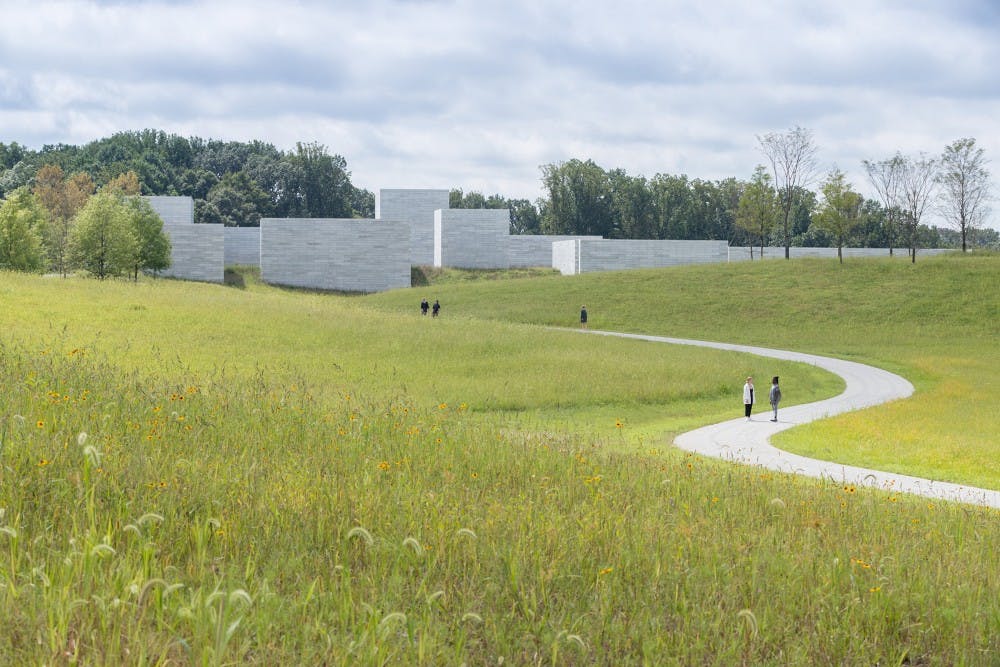Hidden in plain sight yet undiscovered by many in the county, the Glenstone, a contemporary art museum, is a well-kept secret of Potomac, Md.
Glenstone’s collection features art from the post-World War II era to the modern day. Following its inception in 2006 after being financed by American businessman Mitchell Rales, the mission of Glenstone was to seamlessly integrate art, landscape and architecture into a serene environment for introspection and contemplation.
Since 2006, Glenstone has expanded several times to incorporate more artists and their works. Originally consisting of one building on about 300 acres of landscape, Glenstone now has two buildings for displaying art.
Unlike most of the larger art museums in the Washington, D.C. metropolitan area, the surrounding outdoor environment of Glenstone is also carefully planned out and maintained as a part of its overall experience. From the moment you park your car and follow the trail from the parking lot to the arrival hall where you check in, the aesthetic experience of Glenstone already begins.
From the arrival hall, the walk to the Pavilions — a building that opened last year — is about seven minutes long and involves walking outdoors through Glenstone’s exquisite Maryland scenery. This seems to be intentionally and part of a carefully thought out design.
The Pavilions consists of 11 humongous rooms of art. Most of the rooms, with the exception of room two (which includes highlights from many artists), focus on works from one specific artist. The artists currently on display include Ellsworth Kelly, On Kawara, Robert Gober and Michael Heizer. Glenstone also has works from Andy Warhol, Marcel Duchamp and Jackson Pollock.
An intriguing and unique aspect of Glenstone is that, as a museum, it does not have didactic labels anywhere. All that is listed to describe the art on display is the artist’s name, title of the piece, its year and the material it is made of. The lack of verbal description gives the viewer the freedom to interpret the pieces on their own.
Movement throughout Glenstone is methodically planned out. There is a natural way, should the viewer choose to follow it, to move through both the outside pathways of Glenstone and the rooms inside the Pavilions.
The viewing experience at Glenstone epitomizes the approach of “slow art.” “Slow art” describes an unhurried experience of viewing and appreciating art. Glenstone fosters an unmediated opportunity to explore art, and the viewers can choose whether or not to approach the guides present.
Additionally, as parts of its goal to foster “slow art,” Glenstone only lets in a limited number of people a day. Tickets are free everyday, but require prior booking. However, through a partnership with Montgomery County Ride On, anyone who arrives on a Ride On bus is guaranteed walk-in admission into the museum.
Because there is a set minimum number of people exploring Glenstone at a time, visitors get to view the art in an intimate and private setting. Besides the obvious tacit understanding to not physically touch the art on display, there are otherwise no boundaries present, not even the lines that are typically on museum floors which viewers are not allowed to cross.
Each room of art at Glenstone, whether it be in the Pavilions or the Gallery (the original building of Glenstone from 2006), embodies a great amount of empty space. The art pieces are all spread out from each other so that there are no external distractions while one is looking at one individual piece. This minimalist design creates an opportunity for deep personal internalization of the art.
What is also fascinating and immediately apparent at Glenstone is the close integration of the outdoors and indoors in the buildings. The only separation between the viewer and nature is a set of large, remarkably clear glass windows. Viewers can get extremely close to the windows, at moments creating an extraordinary feeling of wonder.
The viewer can also see the wind rustling the bushes and trees outside while not feeling it on the skin directly, yet almost expecting to feel the wind because of the lack of distance.
While at Glenstone, I met visitors who had never been to Glenstone before as well as visitors who visit the Glenstone frequently. The whispered questions that hang in the air at Glenstone are hushed meditations like “what is art?” and “how did somebody come up with this?” and “what is the story behind this piece?”
The guides, who are all experts on the pieces in Glenstone, all relayed similar comments about their overall experiences working at the museum, which is that they are always being challenged intellectually and learning everyday. Glenstone offers a special set of jobs for those who are looking to get their foot in the door in the arts world through their Emerging Professionals Program.
All in all, I thoroughly enjoyed my first visit to Glenstone. I am glad to have enhanced my fall break trip home with this new art experience. I hope to return again soon, maybe the next time I go home.





